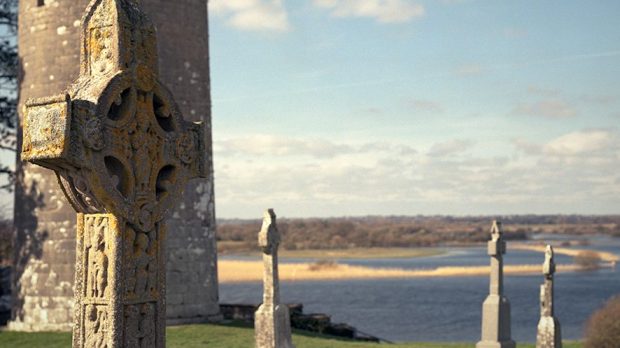Lenten Campaign 2025
This content is free of charge, as are all our articles.
Support us with a donation that is tax-deductible and enable us to continue to reach millions of readers.
The saying goes that on St. Patrick’s Day we are all a bit Irish. But the beloved saint himself was neither Irish nor named Patrick. Here’s a brief list of five curious facts about Ireland’s favorite saint.
- The shamrock: St. Patrick is credited with the Christianization of Ireland in the 5th century. Tradition claims the saint explained the mystery of the Holy Trinity holding a shamrock in his right hand. Judging by the evidence, the metaphor was particularly effective: at his death, Ireland had a good number of churches, monasteries and Christian schools.
- March 17: St. Patrick died on March 17, more than 1500 years ago. Or at least that is what the 16th-century Irish Franciscan theologian Luke Wadding (a fervent Irish nationalist, and also a tenacious advocate of the Catholic cause in Ireland) claimed. If the feast of St. Patrick is included in the universal liturgical calendar, it is because of him.
- St. Patrick’s blue: Nope, St. Patrick’s color is not green. It’s blue. Or, at least, it was. The so-called “St. Patrick’s blue” can still be seen in some old Irish flags, as well as in Irish Citizen Navy ribbons and flags (the same that sought the end of British domination in 1916, with the Easter uprising). The green, apparently, is a consequence of the use of clover as an Irish nationalist symbol.
- Neither Irish nor Patrick: Born in Brittany in the early fourth century, Maewyn Succat (yes, that’s St. Patrick’s actual name) was abducted at the age of 16 by Irish looters who attacked his parents’ house and kept him in captivity for six more years. When fleeing, he returned to Britain and was years later sent back to Ireland, this time as a missionary. When he was ordained as a priest, he assumed the name “Patrick” (from the Latin, Patricii or Patricius, which in turn derives from pater, “father”) as a father figure for his parishioners. Whereas it is true that St Patrick signed all his works as Patricius, it is also true Tíréchan, the seventh century Irish bishop, in his Collectanea (the main biographical-hagiographical source on St. Patrick) refers to Patrick’s name as being “Magonus (famous, great) Succetus (god of war).”
- The parade is not Irish, but American: The first St. Patrick’s Day parade took place in 1762, when a group of Irish soldiers marched through the streets of New York on March 17 to celebrate their patron saint. By 1848, the parade had become an official event in the city. Nowadays, it attracts more than 3 million people.

